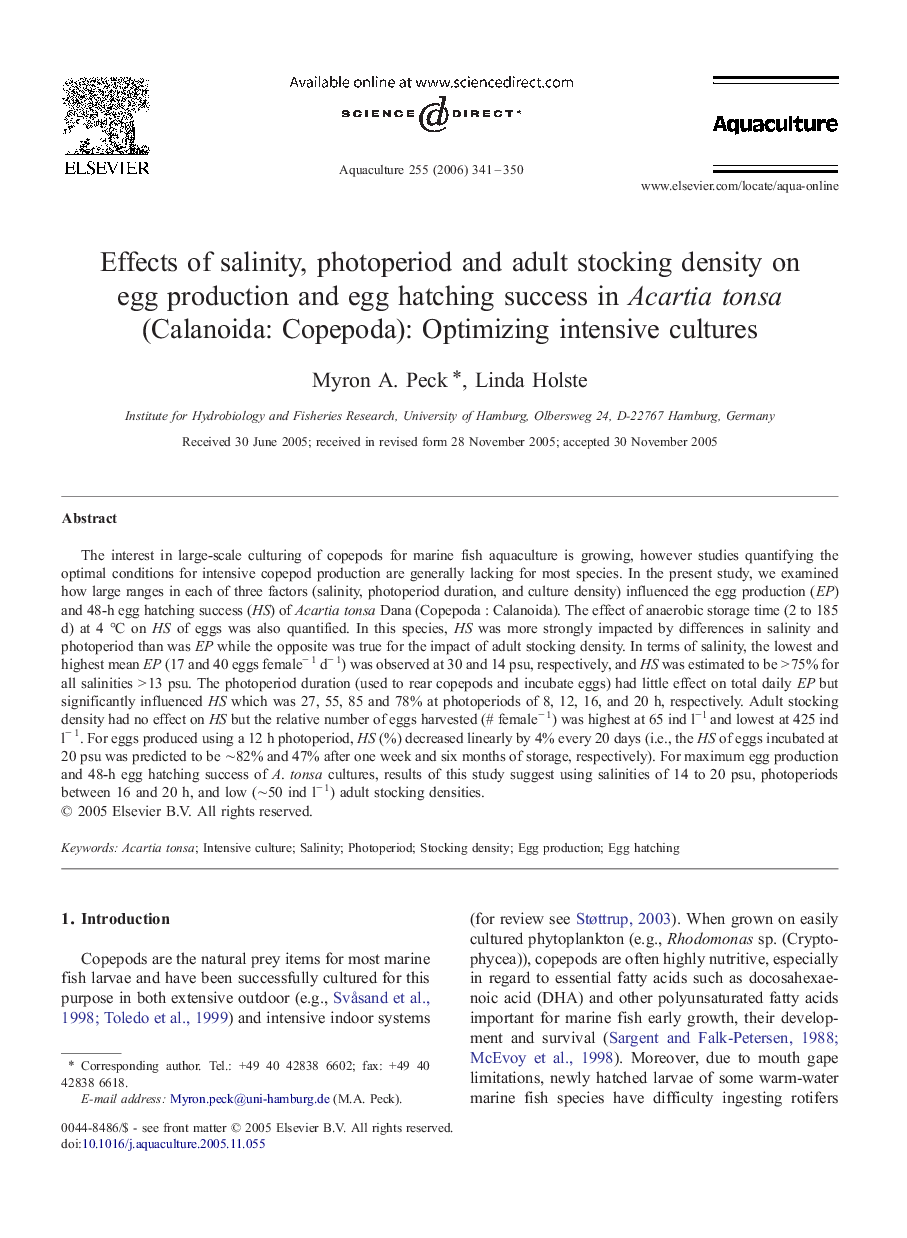| Article ID | Journal | Published Year | Pages | File Type |
|---|---|---|---|---|
| 2426086 | Aquaculture | 2006 | 10 Pages |
The interest in large-scale culturing of copepods for marine fish aquaculture is growing, however studies quantifying the optimal conditions for intensive copepod production are generally lacking for most species. In the present study, we examined how large ranges in each of three factors (salinity, photoperiod duration, and culture density) influenced the egg production (EP) and 48-h egg hatching success (HS) of Acartia tonsa Dana (Copepoda : Calanoida). The effect of anaerobic storage time (2 to 185 d) at 4 °C on HS of eggs was also quantified. In this species, HS was more strongly impacted by differences in salinity and photoperiod than was EP while the opposite was true for the impact of adult stocking density. In terms of salinity, the lowest and highest mean EP (17 and 40 eggs female− 1 d− 1) was observed at 30 and 14 psu, respectively, and HS was estimated to be > 75% for all salinities > 13 psu. The photoperiod duration (used to rear copepods and incubate eggs) had little effect on total daily EP but significantly influenced HS which was 27, 55, 85 and 78% at photoperiods of 8, 12, 16, and 20 h, respectively. Adult stocking density had no effect on HS but the relative number of eggs harvested (# female− 1) was highest at 65 ind l− l and lowest at 425 ind l− 1. For eggs produced using a 12 h photoperiod, HS (%) decreased linearly by 4% every 20 days (i.e., the HS of eggs incubated at 20 psu was predicted to be ∼82% and 47% after one week and six months of storage, respectively). For maximum egg production and 48-h egg hatching success of A. tonsa cultures, results of this study suggest using salinities of 14 to 20 psu, photoperiods between 16 and 20 h, and low (∼50 ind l− 1) adult stocking densities.
